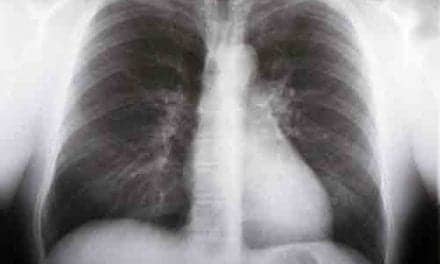
The modest size belies what Tiep and Barnett are accomplishing, however, and that is teaching patients with COPD how to manage their diseases so they can live full lives, despite their illnesses. There are four groups of approximately 10 people (referred by their physicians) that gather once a month, two times per day on Wednesdays and Fridays. During these gatherings, Tiep and Barnett train and reinforce skills patients have learned during pulmonary rehabilitation and emphasize the philosophy of a rapid action plan, whereby patients learn to recognize exacerbations and act upon them early by using their medications—provided ahead of time for just such situations—and calling Tiep immediately. Tiep says that these actions have resulted in patients avoiding hospitalization in all but 20 cases out of the 1,500 he has treated.
Although both Tiep and Barnett come from a pulmonary rehabilitation background at Casa Colina Centers for Rehabilitation in Pomona, they contend that pulmonary rehabilitation is not enough for patients with COPD.
Tiep’s argument is that, although patients do improve when in a structured rehabilitation program, its benefits are lost when they leave the program. Patients do not keep up with their exercise regimen or employ the other strategies to prevent exacerbations that they learned while in a program. So, according to Tiep, pulmonary rehabilitation alone does not work. What clearly does work, he says, is disease management, wherein patients, in collaboration with their pulmonologists or other physicians, create an action plan. This plan includes having medications on hand at all times and the assurance from their physicians that patients will not be “bothering” them if they call immediately when they experience an exacerbation.
All well and good, but there are some barriers to disease management. One is that many physicians do not accept it. Frequently, they feel they are paid only for acute care, not for preventive medicine. Although they agree that preventive medicine is best, most have very busy offices and time to treat only the sickest patients. It would take a redesign of the physicians’ practice models for disease management to become widespread.
This, despite the fact that several insurance companies have embraced the idea—or some aspects of it. They have hired companies that have a bank of RNs who call patients, mostly to remind them to take their medications. They focus on high-risk patients who are either in and out of hospitals or likely to be. Tiep’s vision of disease management, on the other hand, is that all COPD patients would have their skills reinforced every time they visit their physician or attend a group meeting. This has been shown to be less expensive than standard care, wherein patients call their physician only when they have an acute exacerbation and are usually hospitalized.
It is a puzzle to me, after reviewing the evidence and statistics, why more physicians are not embracing the disease-management model for their COPD patients—particularly as our population ages, the prevalence of COPD increases, and health care costs skyrocket. Maybe it is time to change the model and offer COPD patients a shot at an active, full life.










